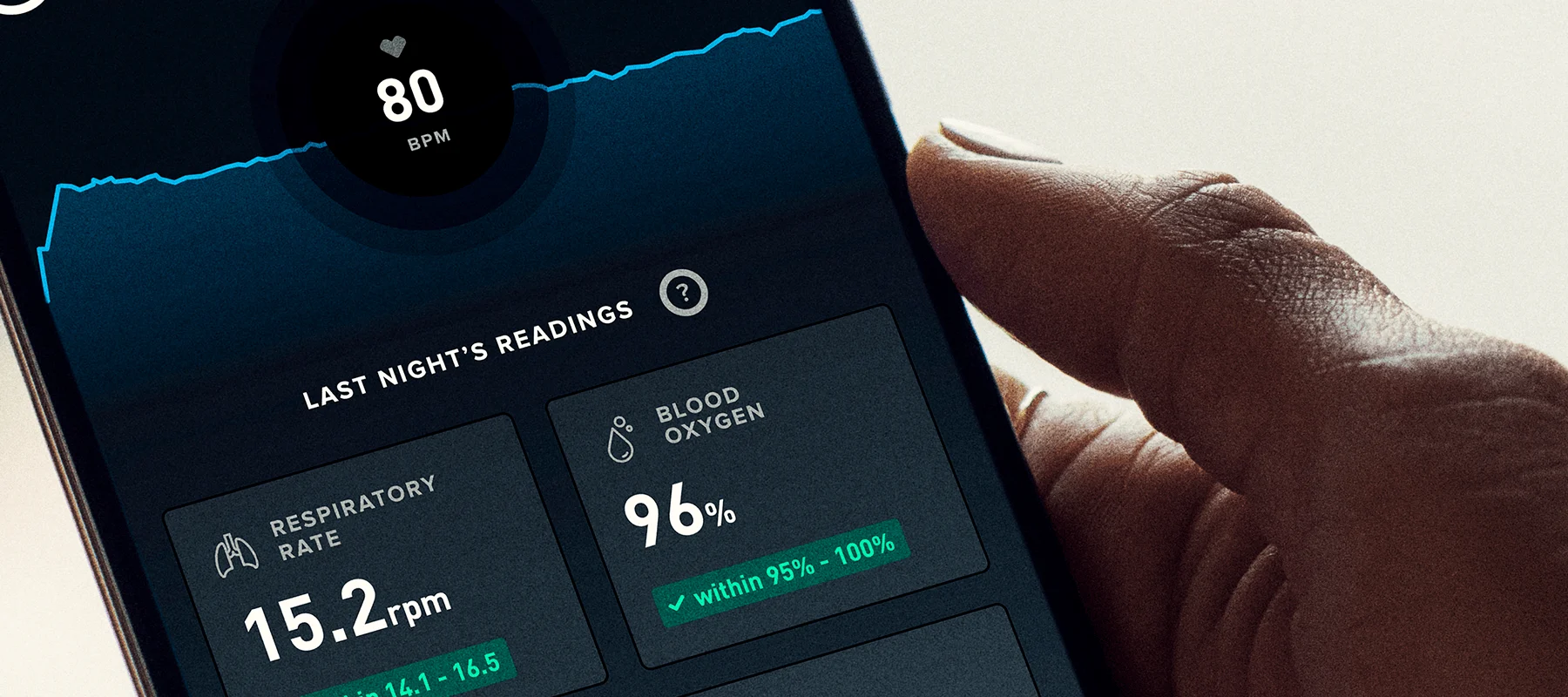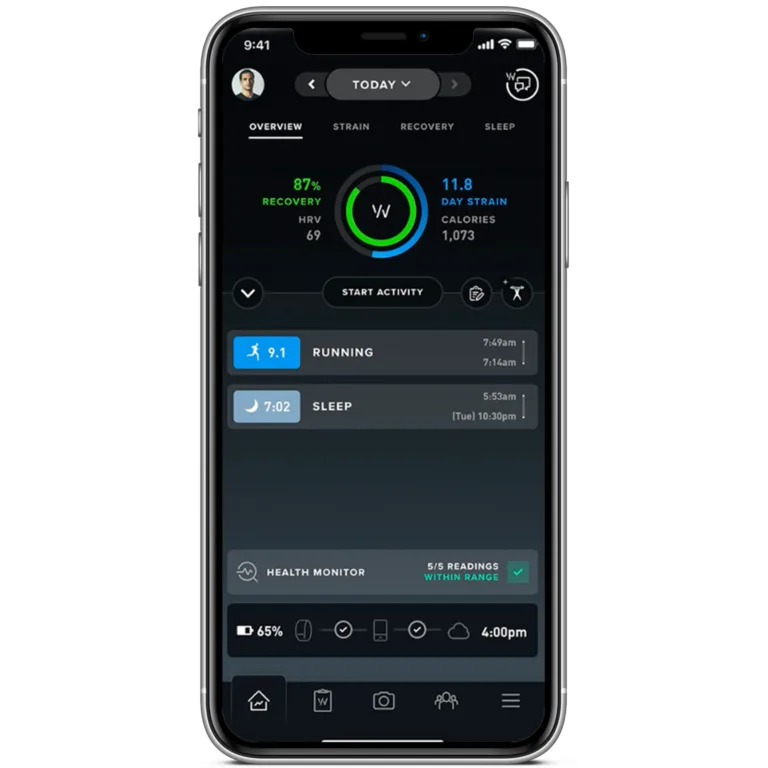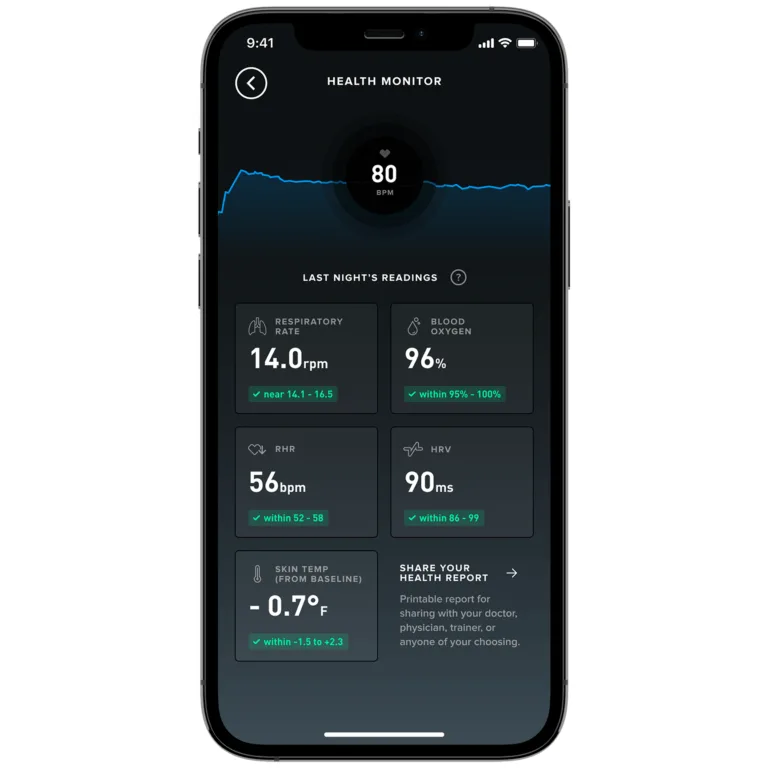Topics
- Article
- App & Features
New WHOOP 4.0 Metric: Blood Oxygen Monitoring

The new WHOOP 4.0 includes pulse oximetry, which enables you to check your daily blood oxygen levels.
Below we’ll discuss what this new metric is, how we measure it, where to find it in the WHOOP app, and how it can benefit you.
What is Blood Oxygen Monitoring?
Monitoring your blood oxygen level is simply checking the amount of oxygen you have circulating through your bloodstream. It can be done very easily through a process called “pulse oximetry.” The oxygen level of your blood is measured as a percentage, referred to as SpO2. If the oxygen saturation of your blood drops too low, it may be symptomatic of several potential health issues.
How Does WHOOP Track Blood Oxygen?
With a new sensor configuration that includes 5 LEDs and 4 photodiodes, the WHOOP 4.0 is now equipped to accurately monitor blood oxygen levels with pulse oximetry. Although most common pulse oximeters track your blood oxygen from your finger, WHOOP implements the same technology to calculate SpO2 on your wrist. Here’s how it works:
- The LEDs shine two different wavelengths of light through the surface of your skin to your blood vessels
- The light is reflected back to the photodiodes, with one wavelength being absorbed better by oxygenated hemoglobin and the other absorbed better by non-oxygenated hemoglobin
- The relative amounts of light that get absorbed can be used to determine how much oxygen is in your blood, and that percentage represents your SpO2 level
WHOOP measures your blood oxygen level each night while you are asleep in order to get as reliable and consistent readings as possible. Every morning, you can check your SpO2 on the Health Monitor.
Where is Blood Oxygen Displayed in the WHOOP App?
There is an overview of the new Health Monitor that appears on the homepage when you first open the WHOOP app.

SpO2 can be found via the health monitor bar from the WHOOP 4.0 app overview screen.
Clicking on it will bring you to the Health Monitor, which displays your blood oxygen level.

SpO2 is one of six key metrics displayed in the Health Monitor.
The Health Monitor can also be accessed via the coaching tab on the menu bar at the bottom of your app screen.

The coaching tab in the WHOOP app shows if your SpO2 and other Health Monitor metrics are within their typical range.
Why is Knowing Blood Oxygen Levels Useful?
Normal SpO2 levels range from 95% to 100%. Low blood oxygen levels may be caused by a number of health problems. For example, If you have COVID-19 and are experiencing other symptoms, low blood oxygen can be an indicator that you should seek medical attention. High-altitude conditions where there is less oxygen in the air can also have an effect on your SpO2. Monitoring your blood oxygen levels regularly is very useful for athletes who are training at high altitude to ensure they are not pushing themselves too hard in a new environment. Knowing your baseline metrics has never been more important, and the new Health Monitor feature alerts you via a color-coded system if your SpO2 or other vitals stray beyond their typical range. Learn More: What is Blood Oxygen, What Are Normal Levels & How to Measure It How to Increase Blood Oxygen Level The products and services of WHOOP are not medical devices, are not intended to diagnose COVID-19, the flu or any other disease, and should not be used as a substitute for professional medical advice, diagnosis or treatment. All content available through the products and services of WHOOP is for general informational purposes only.